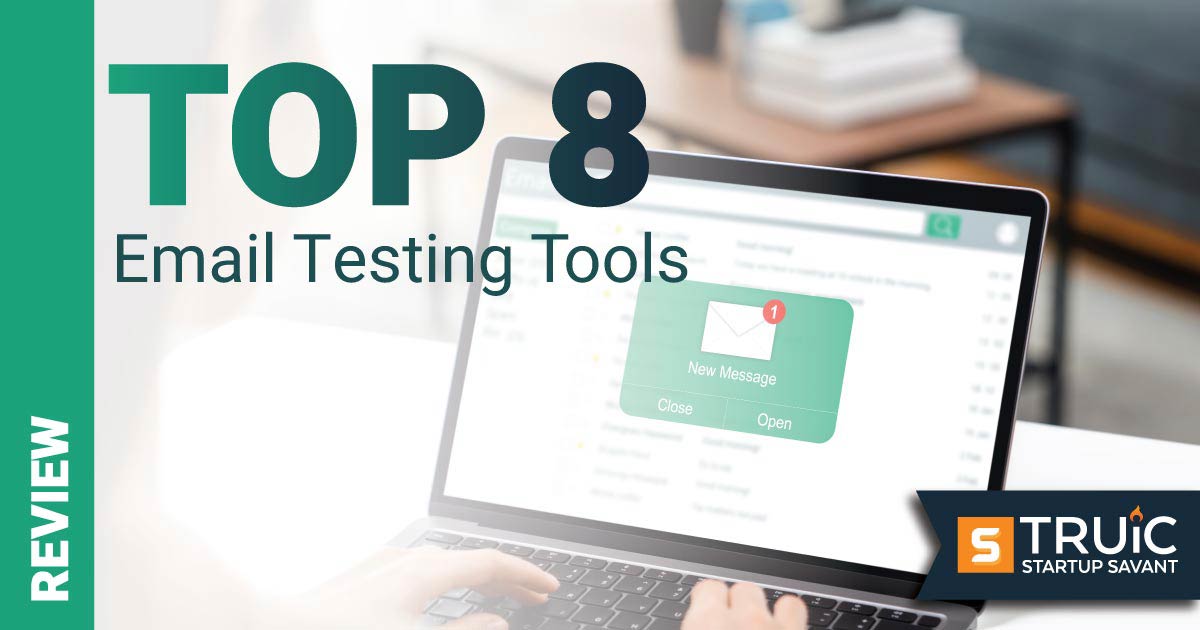What Is a Bounced Email?

Last Updated: By TRUiC Team
Email marketing remains one of the most effective types of digital marketing for companies of all industries. However, there are a number of pitfalls that email marketers need to avoid as they perfect their email marketing strategy, and one such pitfall is a high email bounce rate.
To help ensure that as many potential customers see your email marketing content as possible, this guide covers everything you need to know about bounced emails and how to prevent them, including what a bounced email is, types of email bounces, and five effective strategies for lowering your email bounce rate.
Recommended: Check out our review of the best email marketing software for startups.
Email Bounces Explained
What Are Bounced Emails?
When a marketing email is not successfully delivered to its intended recipient, it is said to have "bounced." There are a number of reasons why this might occur, and we'll dive into the specific factors that cause emails to bounce in the next section. For now, though, understand that the issue with bounced emails is that they limit your email marketing reach. They can also damage your email deliverability rate and sender reputation, which is an even bigger reason why you should keep your bounce rate as low as possible.
Many of the reasons why emails bounce are things that will be out of your control. For example, if the recipient has a full inbox or their email account has been suspended, then any email that they are sent will bounce. However, there are still several steps that you can take to reduce your email bounce rate by mitigating the factors that are under your control.
Types of Email Bounces
There are two types of email bounces: hard bounces and soft bounces. Before we get into what causes an email to bounce and how to lower your bounce rate, it's important to take a closer look at the distinction between these two types.
Soft Bounces
A soft bounce occurs when an email is not delivered to its recipient due to a temporary issue. For example, a recipient who is unable to receive an email due to their inbox being full or a recipient who is unable to receive an email due to a temporary issue with the receiving server.
In the event of a soft bounce, try resending the email to see if it will eventually go through. If it doesn't go through after these attempts, though, consider it a hard bounce and remove that subscriber from your mailing list.
Hard Bounces
A hard bounce occurs when an email is not delivered to its recipient due to a permanent issue. The most common reason for hard bounces is that the recipient's email address is invalid or no longer in use. Since hard bounces can lower your email deliverability rate and hurt your sender reputation, removing these email addresses from your mailing list is important.
Why Do Emails Bounce?
We've already mentioned a few of the more common reasons why emails bounce, but it's worth taking a more in-depth look at the various reasons why this issue happens. Here is a complete list of issues that can cause an email to bounce:
Incorrect Email Address
Any typo in a recipient's email address will cause the emails that you send them to bounce. Unfortunately, people often enter their email addresses incorrectly when signing up for newsletters and mailing lists, making this one of the most common reasons for bounced emails.
Full Inbox
Once a person's email inbox is full, they are unable to receive any additional emails until they make room in their inbox. An email that bounces due to a full inbox will show up as a soft bounce.
Spam Filters
To prevent users from being bombarded with spam messages, email servers put spam filters in place that are designed to detect if a message is spam. If your email is flagged as spam, it will either be sent to the recipient's spam folder or bounced.
Sender Reputation
Several different factors will determine whether or not your email is able to pass a spam filter, but one of the most important of these factors is your sender reputation. Your sender reputation is linked to either your domain, IP address, or both, and there are a number of things that can impact it. If your sender reputation is low, your emails are more likely to be flagged as spam and bounced.
Blocked Address
If a recipient has blocked your email address, then any email you try to send them will be bounced.
Message Is Too Large
Receiving servers have limits on how large an email can be, and these limits will vary from server to server. Gmail, for instance, has a size limit of 25 MB for inbound emails. If your email exceeds the server's size limit, then it will bounce.
In most cases, staying under the size limit shouldn't be much of an issue. However, if your email contains a lot of images or large attachments, or is especially lengthy, it might not go through.
Vacation/Auto-Reply
If a recipient sets their email account as on vacation/auto-reply, any emails sent will bounce for as long as this setting is active. This type of soft bounce is an issue that will typically resolve itself once the recipient updates their settings and starts rechecking their inbox. If several months go by and emails to a recipient are still bouncing for this reason, then you may want to remove them from your mailing list.
What Is a Good Email Bounce Rate?
As a general rule of thumb, you should aim for a bounce rate of 2% or lower. Anything between 2%–5% or higher is considered a poor bounce rate and is worth addressing.
Even if your bounce rate is lower than 2%, you may be able to lower it even further with the right strategy. Remember that a high bounce rate can impact your sender reputation, which can cause even more of your emails to bounce. It is a vicious cycle and one that you should avoid by reducing your average bounce rate as much as possible.
Ways to Lower Email Bounce Rate
Many of the reasons why emails bounce are factors that will be outside your control. However, there are still several things that you can do to lower your email bounce rate. To protect your sender reputation and ensure that as many potential customers see your marketing emails as possible, here are five effective tips to implement:
1. Clean Your List Routinely
One of the simplest ways to lower your bounce rate is to ensure that you don't have invalid email addresses on your mailing list. Any hard bounces should be removed from your mailing list since hard bounces are due to permanent issues such as an incorrect address. Soft bounces that continue to occur, meanwhile, should be treated as hard bounces, and the recipients in question should be removed from your mailing list.
It may seem counterintuitive to trim your mailing list after working so hard to grow it, but it's vital to preventing a high bounce rate from harming your sender reputation. Think of it like pruning a tree to encourage healthier growth, and don't be afraid to remove recipients after ongoing issues with bounced emails.
2. Make Sure Your Emails Don't Seem Like Spam
There's no surefire way to prevent spam filters from marking your emails as spam, but there are things that you can do to reduce the likelihood. The biggest key to preventing your emails from being flagged as spam is avoiding the phrases spam filters are likely to see as red flags. "Sale," "free offer," "no catch," and "make money" are just a few examples of phrases that you should avoid in your email subject lines. Using images that are either too large or too small will also increase the probability that your email is flagged as spam.
3. Segment Your Mailing List
Segmenting your mailing list ensures that you are showing your subscribers content that is custom-tailored to their preferences. This is a great strategy for improving the effectiveness of your email marketing efforts across the board, and it is also a great way to lower your email bounce rate.
When you segment your email list in a way that allows you to send subscribers emails tailored to their tastes, you are sure to reduce the number of subscribers who block your address or mark your emails as spam, which can go a long way toward lowering your bounce rate.
4. Avoid Free Sender Domains
Emails sent from free sender domains such as Gmail and Yahoo are much more likely to be flagged as spam than emails sent from an owned domain. Sending emails from your own domain (such as info@yourbusinessname.com) reduces the likelihood that they will be marked as spam and will make your emails seem more professional as well.
5. Utilize Double Opt-Ins
One of the best ways to make sure that you don't end up with any invalid or inactive email addresses on your mailing list is to utilize double opt-ins. A double opt-in requires that subscribers confirm their subscription to your mailing list, typically by opening a link in a confirmation email. By requiring that new subscribers confirm their email address, you can ensure that the email address is valid and that the subscriber did indeed intend to subscribe.


